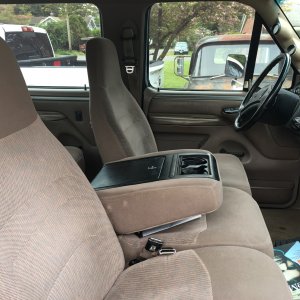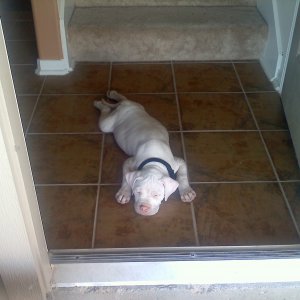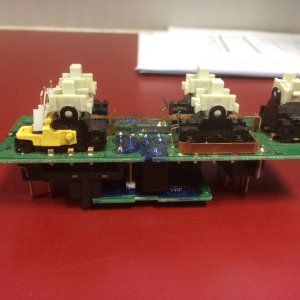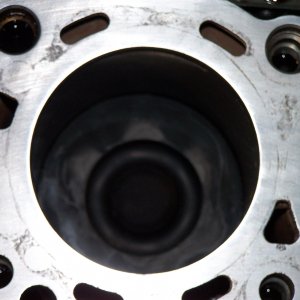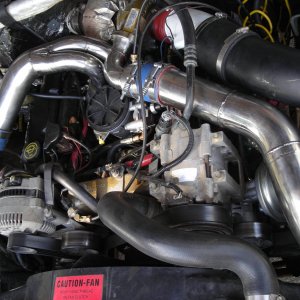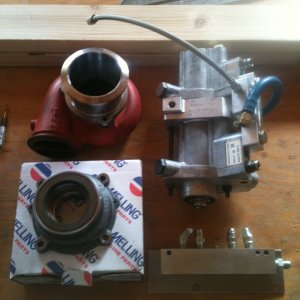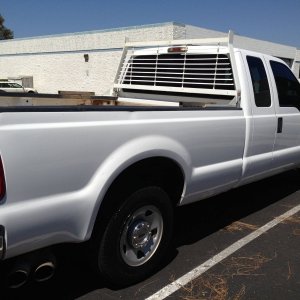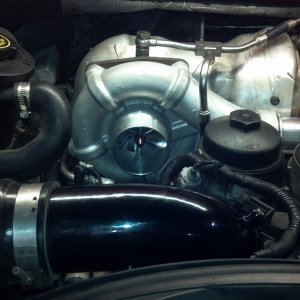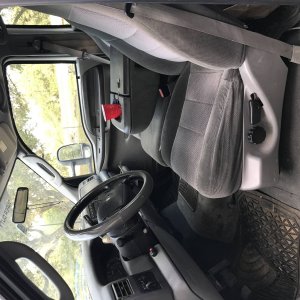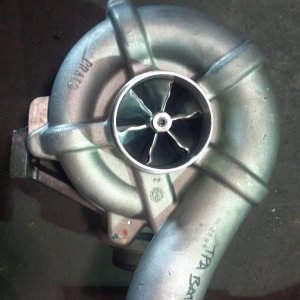Why am I not using an Allison ?
I am going to address this question once because it was asked. I don't want to start a debate on it. Everyone has their favorite components. I might be right, I might be wrong, bottom line is I am going to try the 6R140. If its a dud, I'll swap it out.
Cost.
A stock 6 speed Allison transmission will not hold 1100 ftlbs, especially in a towing application. The stock OD clutch packs are notorious for failing in towing applications.
I don't mean that statement as an insult to the transmission or anyone who owns one. I arrived at that conclusion by spending about a week of my spare time on Duramax forums and reading about transmission failures. I did the same sort of reading on Ford and Dodge forums.
A 6 speed Allison transmission core is $2500. A high performance rebuild is about $5K. Total transmission cost, about $7500.
I think a stock 6R140 will hold 1100 ftlbs in a towing application. Its a new transmission. I might be right, I might be wrong.
From what I can tell the 5R110 does better than any other stock auto transmission with tuned engines. I think the 6R140 takes that strength a step further and adds another gear ratio.
For those that aren't aware, the 6R140 was a clean sheet design. Its totally new with zero carry over from the 5R110.
The "140" part of the name means its designed to handle 1400 ftlbs of torque on the transmission input shaft. With a TC ratio of 1.8, that is roughly 800 ftlbs at the engine, but with the TC locked, that is a full 1400 ftlbs from the engine. And that is with stock clutch pack application pressures.
I paid $2450 for my 6R140 with the torque converter, with less than 10K on it.
I'll be using the stock TC as well.
Gear Ratios
The gear ratios in the Allison are 3.1, 1.81, 1.41, 1.0, 0.71 and 0.61.
The gear ratios in the 6R140 are 3.97, 2.32, 1.52, 1.15, 0.86 and 0.67
The top 2 gear ratios in a ZF6 are 1.0 and 0.72.
My old truck has the same axle ratios and tires as my new truck.
With the ZF6 in OD (0.72), the engine is running 1650 RPM at 60MPH. That is not a good gear for towing, although the stock 5.9 will tow our trailer there unless we are climbing a significant grade or have a very strong headwind.
The next gear down on the ZF is direct, which works for towing, but the engine is running about 2300 RPM at 60 MPH, where its noisier and thirstier. Engine speed is about 2450 at 65 MPH.
With the Allison transmission, towing in OD (0.61) is pretty much out of the question, especially given the issues people have with the OD clutch pack.
The next gear down is 0.71, which is just about the same as OD in the ZF6 I have now. That gear will work, but its not optimal.
The next gear down from that is direct, which is the same as in the ZF6.
So a 6 speed Allison basically gives me the same gear ratios for towing that I had with the ZF6, with the addition of another OD gear for running empty.
What I really want is a double OD transmission with 2 usable OD gears for towing. Enter the 6R140.
OD is 0.67 in the 6R140, which is about 1550 RPM at 60 MPH and 1650 RPM at 65 MPH. In easy towing conditions, a torquey 6.7 can probably pull the trailer in that gear and it should result in very good fuel economy. Edit. My dad has a smaller 5er than we do. His truck has a taller axle ratio (3.31 ?) but he doesn't have 20" wheels and he pulls his trailer in OD all the time.
When the load gets too heavy, one gear down is 0.86, which is 1970 RPM at 60 MPH and 2134 RPM at 65 MPH. I think that is almost the perfect engine speed for towing. Its 400 RPM less than a direct gear.
The next gear down on the 6R140 is 1.15:1, which is a little bigger split than I'd like but still a very usable gear. It puts the engine right into its powerband at 2650 RPM at 60 MPH. If my engine plans work out, my engine makes nearly 600 HP at the crank there. Should be a perfect gear for pulling steep passes at 50 MPH, which is 2200 RPM. I expect my engine to make 500 HP (1200 ftlbs) at the crank at 2200 RPM.
There are other misc reasons as well, such as the Ford column shifter works (mechanically) directly with the 6R140 with no modifications. Or at least it appears to.
The devil is in the details. I'll share what I learn, right or wrong, going forward.

